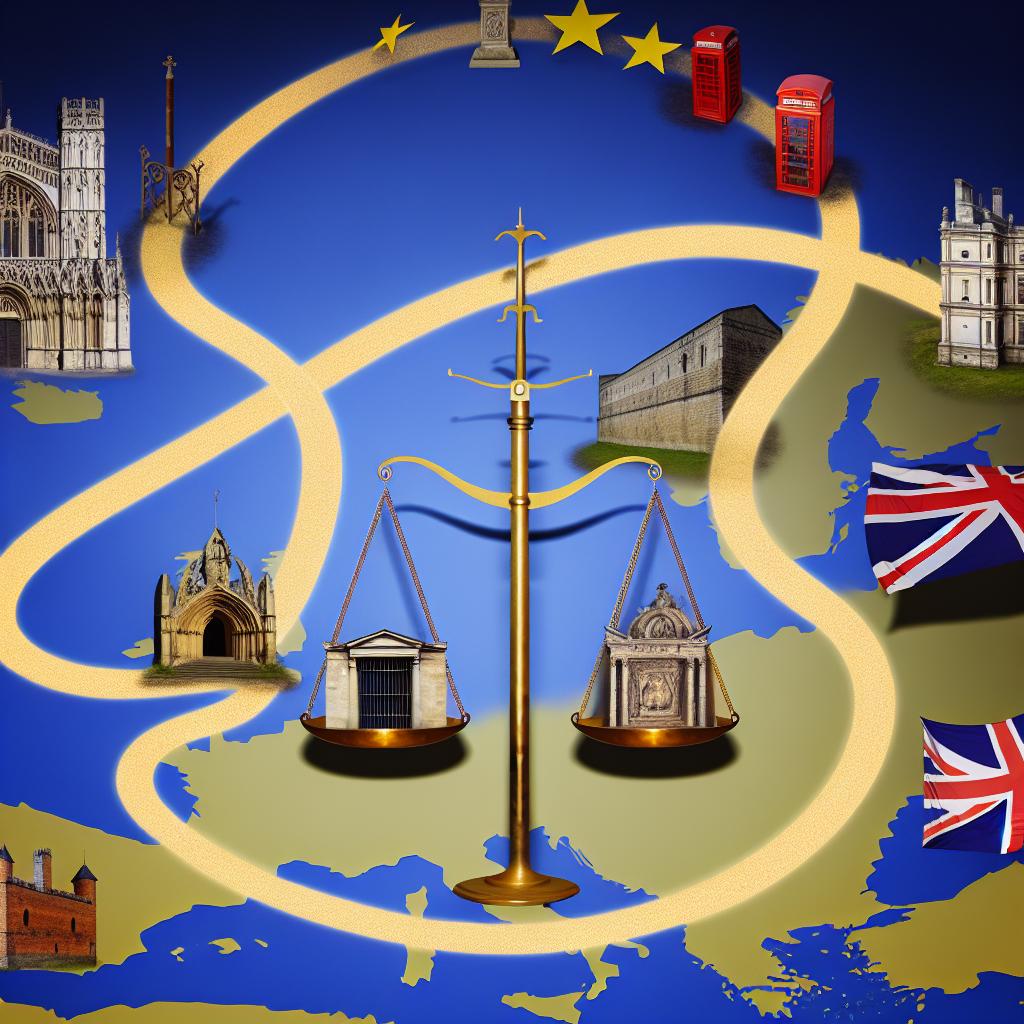The Effects of Brexit on Cultural Exchange
The United Kingdom’s departure from the European Union represents a pivotal change that touches upon various facets of society, extending its influence into the domain of cultural exchange. For decades, the UK thrived as a participant in several European cultural networks, reaping the benefits from not just shared projects, but also substantial funding programs and significant collaborative initiatives. Following the UK’s exit from the EU, the dynamics of these relationships have altered; in some contexts, the partnerships that once flourished have had to be readapted or, in certain cases, have reached an end.
Changes in Funding and Collaborations
Prior to Brexit, European programs such as Creative Europe played a critical role in the sustenance and growth of UK-based cultural projects and organizations. These programs provided essential funding that supported a wide range of cultural activities and initiatives. Post-Brexit, however, UK entities find themselves ineligible for several EU grants. This ineligibility results in a discernible reduction in available resources earmarked for initiating and sustaining new cultural projects.
The new landscape demands active exploration of alternative sources for financial support. This necessity has led UK organizations to turn to domestic funding opportunities or seek out new bilateral agreements with other nations. While the UK government has enacted measures to cushion this financial blow and assist organizations during this transition, the adjustment period remains fraught with challenges. Some organizations are struggling to align with new funding structures or recreate the cooperative relationships they once had under EU jurisdiction.
Impact on Artists and Cultural Professionals
A direct consequence of Brexit felt by individuals within the cultural sectors includes the altered administrative landscape affecting artists and cultural professionals. The pre-Brexit period witnessed the free movement of people, rendering travel and residency straightforward for work-related purposes across EU countries. With the enactment of post-Brexit immigration regulations, however, new rules regarding visa requirements and work permits pose logistical barriers.
These new regulatory demands place constraints on artists in the UK aspiring to reach audiences within the EU, and vice versa. The necessity of securing appropriate documentation can delay or even inhibit artistic ventures, limiting the scope for artistic collaboration and exchange. The potential consequences extend beyond individual projects, affecting broader relationships and networks that have historically facilitated vibrant cultural sharing between the UK and EU member states.
Affect on Museum Operations and Exhibitions
Brexit’s influence extends to UK museums, which experience pressures concerning the import and export of artefacts essential for international exhibitions. New customs protocols add layers of bureaucracy and incur additional financial burden, increasing the complexity and cost of cross-border loans. These challenges necessitate museums to rethink logistical operations for moving collections internationally, while simultaneously dealing with the financial implications of new insurance liabilities and coverage requirements.
Museums must balance the allure of maintaining international partnerships through collaborative exhibits with the pragmatic concerns of navigating newly imposed trade regulations. These institutions are grappling with ways to fulfill their missions to provide culturally enriching experiences for their audiences under new financial and administrative constraints.
The Path Forward
As Brexit’s implications continue to unfold, cultural organizations both within the UK and across Europe are actively exploring innovative avenues to uphold and nurture cultural connections. A significant trend observed is the increasing emphasis on digital collaborations and the hosting of virtual exhibitions. These technologically enabled platforms function to bridge physical discontinuities, ensuring that exchanges in the art and cultural world persevere despite tangible barriers.
Furthermore, there is movement towards re-establishing and renegotiating bilateral cultural treaties. Such treaties may offer a framework through which future cultural exchanges can be more structured and predictable amidst the evolving international landscape. As these sectors adjust to their post-Brexit realities, they are perpetually engaged in reimagining strategies to inspire continuous cooperation and deepen understanding between UK and European cultural communities.
The broader implications of Brexit on cultural exchange reflect the necessity of adaptability and innovation in institutional practice. As organizations and individuals adjust, the cultural fabric of both regions is continuously reshaped, underlining a commitment to nurturing bonds that transcend formal political shifts. Through digital transformation and updated cooperative agreements, cultural exchange endeavors to transcend emerging challenges, solidifying a commitment to sustained cultural dialogue and interaction.

